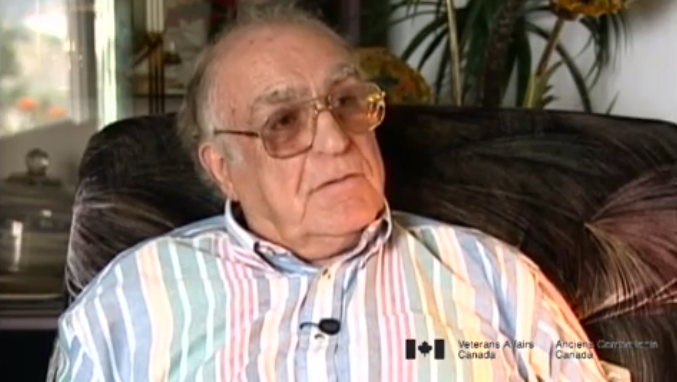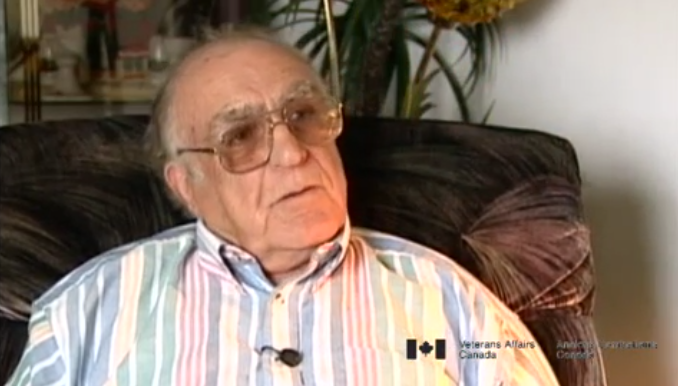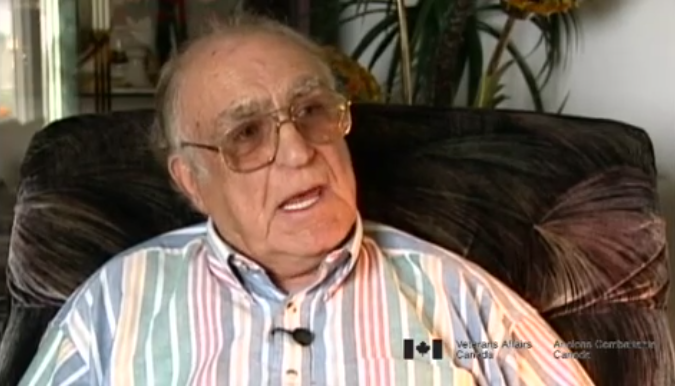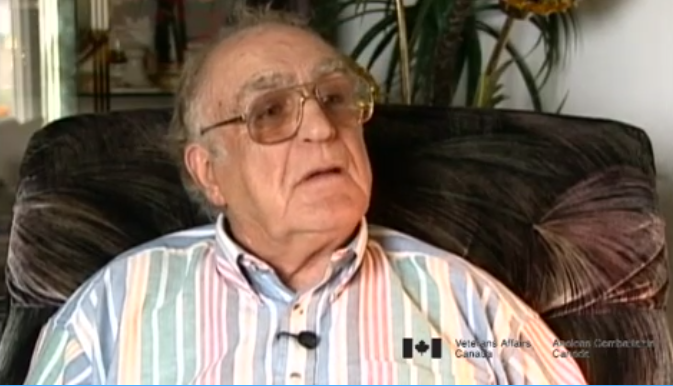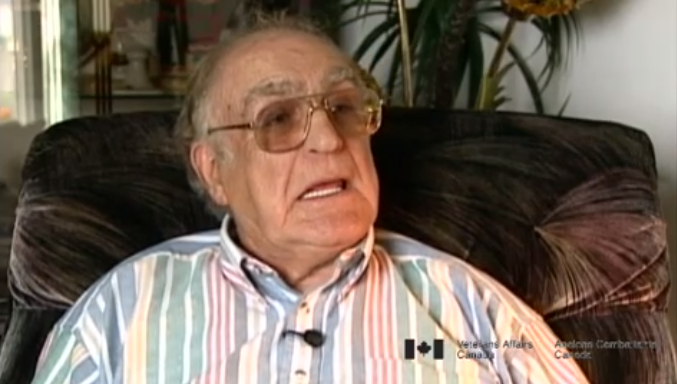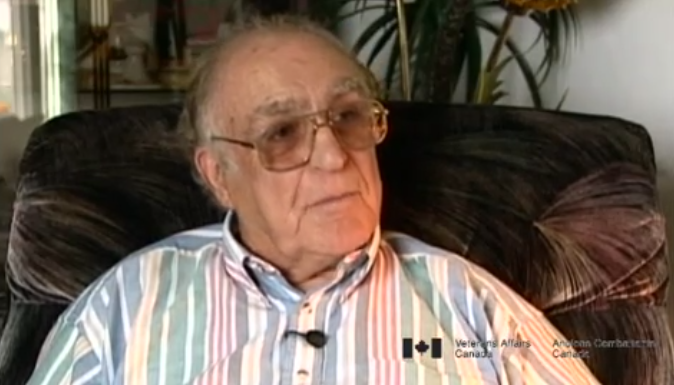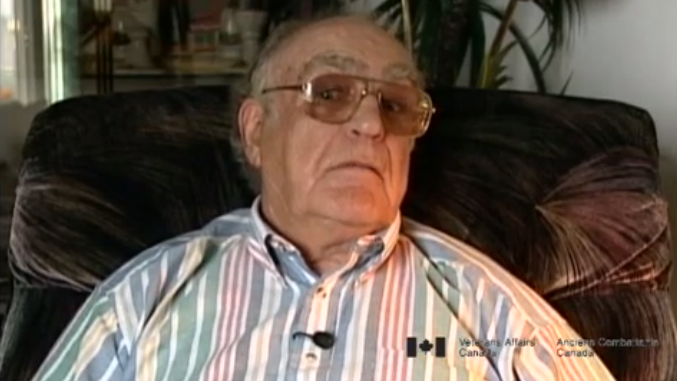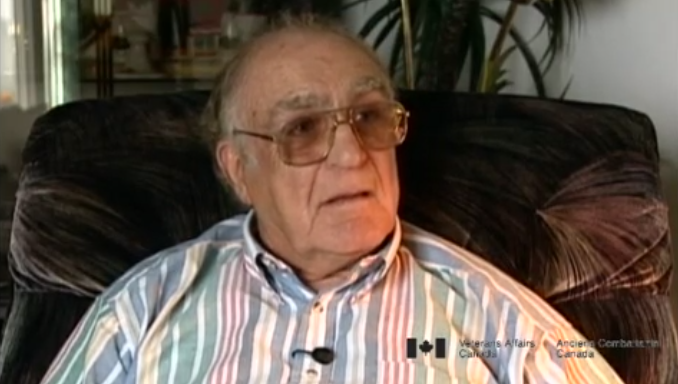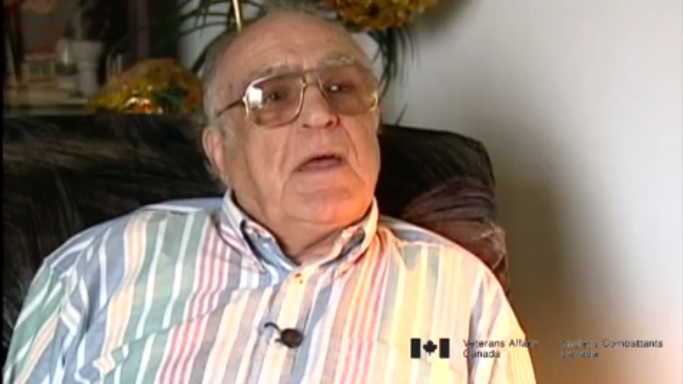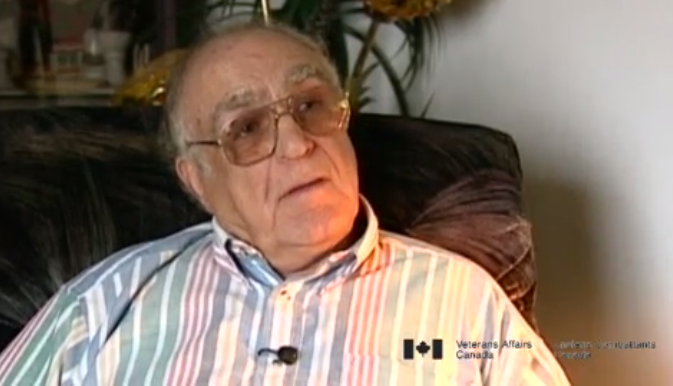We were still doing drill and I was in, most of the boys had
moved, I guess they knew by this time that something was coming.
But I was in Kowloon with the rest of our recruits, probably 40,
45 or 50 of us and we went over to the NAFFY Building and
we had something to eat, in the morning. We could have
that anytime. Our money was very good over there.
I, with a friend of mine, he’s dead now, from Hopetown, William
Huntington, we went in to play some pool before we went on to
drill, and some Chinaman jumped out and he said, “There’s some
planes.” So we run out and we said, “Look at our planes from
Singapore.” And all at once they come into a dive. It was the
Japanese, and they hit the Jubilee Building, and that’s the first
person I seen killed because they machine gunned our barracks
and the burst of bullets just about cut a Chinese guy, he went
to dive through a fence, and a burst of bullets just about cut
him in two. That’s the first death I saw. So, our sergeant got
us in underneath the bed. By this time, the sergeant was
Ted Salsaw and a fellow by the name of Flash Clayton,
so they got us in, they got us under the beds, these iron beds,
until the bombing was over. And when the bombing was over,
we went out and we could see these craters, holes that
the bombs had struck. They moved us out right away, onto
the ferry. We marched down onto the ferry, and I was very
worried because I had this big pack on and I was not a swimmer.
I said, “If they hit me, I’m gonna drown.” But we were lucky
they did not come over, and I went on to the Island and I went
out to an outpost by the name of Lai Moon. I really think myself,
well I can remember that we just thought the Americans were
going to wipe these little people right off the face of the earth
I did not see any fear in anybody. No, I’m sure that we felt that
we would not be there long. Anyway, the night they landed, they
landed right where I was, at Lai Moon. We had a Newfoundland
dog there. I guess he got killed. He grabbed a hand grenade but
some say he killed a few Japs first. But we did not have the
people. The only ones I saw fighting was Canadians, I have
to be honest. I shouldn’t say this maybe, but I only seen
Canadians fighting and we only had 2,000 of us there and the
Japs, they were all over the place. They just kept coming
and we did not have a gun. I can remember having a 9.2.
I think they put that out of action the first day or something.
We had no big guns, we had no ammunition, and I had never
seen a mortar or a Tommy gun or a machine gun. The first
Tommy gun I saw was Lance Ross’, and the machine gun,
the only time I seen it was when it was on the floor when I was
taking it apart. I had never seen a Vickers. These things all
came into view when I was in to the action but we had no
ammunition for most of them. One day we were on top of a hill
and Lance, I did not know how to pull a hand grenade. I had my,
I had thrown away my respirator, and I had put the hand grenades
in there and I was alongside this Lance Ross from Hopetown,
and I was passing him the grenades because I did not even know
how to throw them. And we cornered a bunch of Japs down
over a hill, quite a mountain, into a white building, they went
in there. So we had no mortar so we sent down a platoon,
this was 16 platoon. And we sent down to get a mortar
to some other platoon and they had no mortar.
So the Japs, when the night come, they sneaked out.
But we could have blown that building all to “H.”



